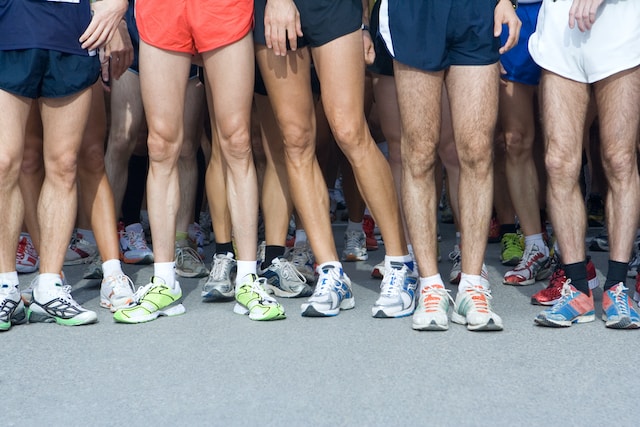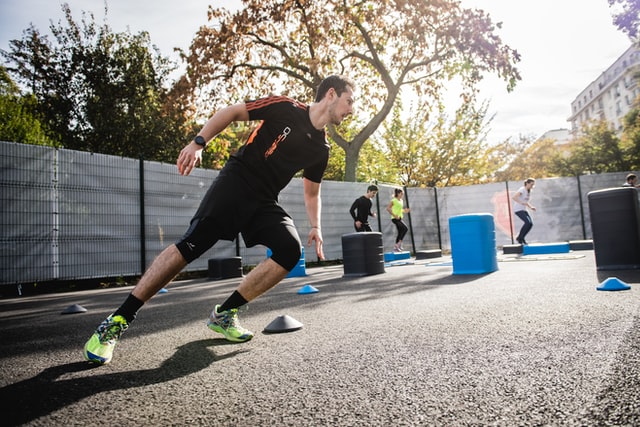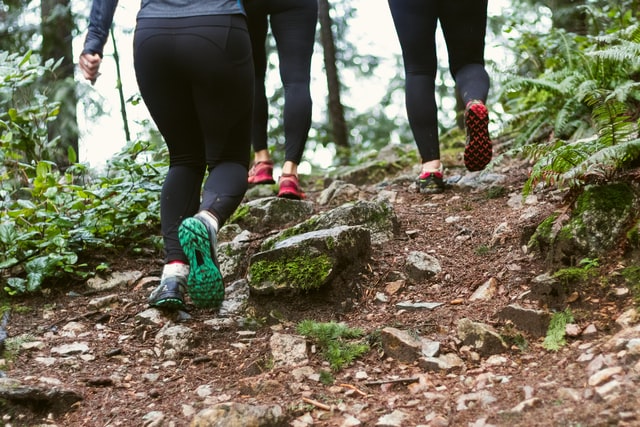Getting the right shoes is one of the most important things you can do to help prevent injuries and ensure your best performance. Whether at a running store or shopping online, understanding how to evaluate shoe features can help you find the right fit and feel for your feet. Here is our guide to finding the best running shoes features:
Cushioning
Whether you are a beginner or an experienced runner, having shoes with adequate cushioning is essential. Enough cushioning allows your feet to absorb the impact through your knees and spine.
When selecting a running shoe, you want to look for a balance of cushioning, stability, and ground feel. When testing running shoes, pay attention to how your foot feels when it hits the ground and if it falls into the arch and is supported in all the right places.
Stability and motion control shoes are designed to reduce excessive pronation (your foot rolling inward too much) and often have features such as medial posts, dual-density foams, varus wedges, and guide rails. Research has shown that runners tend to smack the ground harder but get injured less when running in these shoes.
Stability
Unlike walking shoes that offer only cushioning to reduce impact, the best running shoes are designed to work with the foot’s natural motion during the stride. Most runners pronate — the feet roll inward upon impact with the ground – and that movement disperses the shock of influence throughout the body.
But if you overpronate excessively, the impact shock can strain the knees and hip joints, leading to overuse injuries like shin splints and a runner’s knee. In those cases, a stability shoe might be the right choice.
Stability shoes feature structures like guide rails or posts along the lateral surface and heel of the shoe that help control excessive pronation. If you need stability shoes, it’s a good idea to have an expert at your local running specialty store examine your foot strike and gait.
Breathability
Breathable shoes help you enjoy a healthier and more comfortable running experience. Without breathability, moisture builds up in the shoes and can cause foot problems such as blisters or fungal infections. Breathable shoes wick away moisture and allow the sweat to evaporate, keeping your feet drier and more comfortable.
In a Delphi study, footwear experts were asked to recommend the most critical shoe features for three different running levels. The feature properties that reached a consensus threshold in the first round were verified in subsequent rounds. Twenty running shoe features were assessed in this way. The most important features included upper breathability, crash pad, and heel-to-toe drop. The remaining parts have yet to reach consensus and are not considered particularly important for running performance.
Weight
Researchers have found that shoes of similar quality but varying in weight can affect your running speed. The difference may seem small, but putting in hundreds of miles in your training each week a few extra ounces can significantly impact you.
A shoe’s weight depends on its cushioning and the type of stability features like medial posts and truss systems used in many running shoes. Stability features add weight, but as technology has improved, it’s not uncommon to find running shoes that are lightweight enough to be considered minimalist.
Lighter is not always better; however, for many runners, a heavier shoe that offers more cushioning works best for them. For this reason, many runners own a pair of lightweight running shoes and a more severe training shoe that they swap out for race day or speedwork days.
Style
Like car manufacturers, running shoe brands make different shoes to suit the needs of other runners. The most crucial factor in choosing a shoe is that it fits well and is comfortable for your run.
Some shoes offer extra stability and control features to keep your feet from excessive movement, mainly overpronation or rolling inward. Although research has found that most people may not need pronation support, these devices help some runners maintain their preferred foot movement.
Heel cushioning is another feature that can decrease the impact of heel strikes, especially for beginners or those with high arches. A softer, curved outer heel reduces the force on your foot at contact, but you should be independent of these features since your body naturally provides most of your cushioning on runs.



